Surrey residents blame Berkshire relief channel for Thames floods
- Published
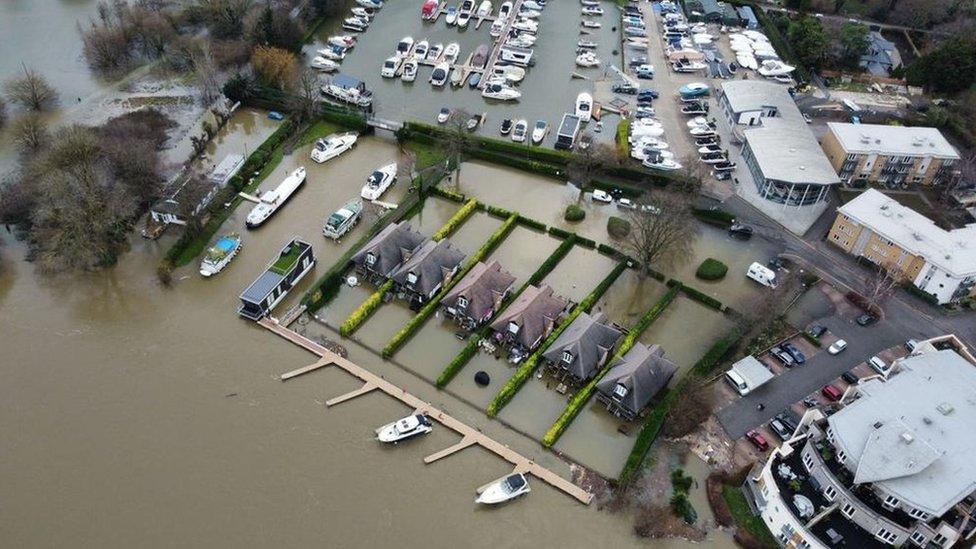
Businesses and residents flooded by the River Thames in Surrey have raised concerns over a flood relief scheme in Berkshire.
The Jubilee River, external relief channel takes water from the Thames at Maidenhead and puts it back in the Thames at Datchet, where it flows into Surrey. It was in use last week when the area flooded.
A group of residents and marine firms are considering legal action.
The Environment Agency said the scheme did not increase downstream levels.
A further statement from Defra said the Environment Agency would not be permitted to operate flood alleviation schemes if they increased the risk to other communities.
Debbie Russell, from Bates Wharf, Surrey, emailed Prime Minister Rishi Sunak and other MPs and said: "I am actively looking to set up a campaign to get the Jubilee closed until it's fit for purpose."
She said "numerous" people were so outraged they were looking at the possibility of legal action against the Environment Agency and government.
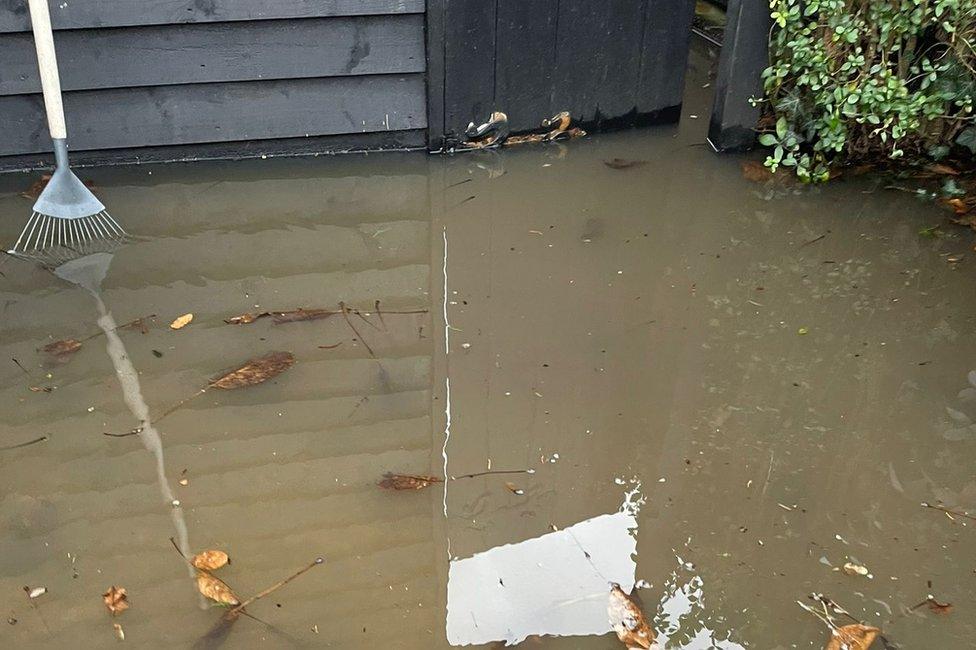
Hannah Rush saw her home, garden and cabins flooded
Mrs Russell said the Thames used to be dredged before the Environment Agency took over in 1996, but this was no longer done and the river had lost capacity.
The river could not cope now with a normal flood from rainfall and could not take added water from the manmade Jubilee River, she said.
She said she was starting a petition calling on the Environment Agency to stop automated letting from the Jubilee River until they had dredged the Thames.
"It's devastating for all boat owners as they are becoming more and more limited to where they can go on the river," she said. "There are dangers everywhere by the silt building up after 28 years of neglect.
"Our marina here at W Bates & Son has been extremely hard to manage due to the extremely high levels seen in the last 10 years, making it perilous for our team to ensure ropes and customers' boats are safe."

What is the Jubilee River flood relief scheme?
The Jubilee River, built by the Environment Agency, opened in 2002
It diverts water from the Thames upstream of Maidenhead and rejoins the Thames downstream of Windsor
During floods it is used to lower Thames water levels in Berkshire and reduce the flood risk to about 3,000 properties in Maidenhead, Windsor, Eton and Cookham
The Environment Agency states that it operates so flood levels downstream are not adversely affected
Consultation starts this month on another flood relief plan, the River Thames Scheme, which is intended to protect the area from Egham in Surrey to Teddington in London
Officials from the scheme, external describe the stretch of the River Thames from Egham to Teddington as "part of the largest area of undefended, developed floodplain in England"

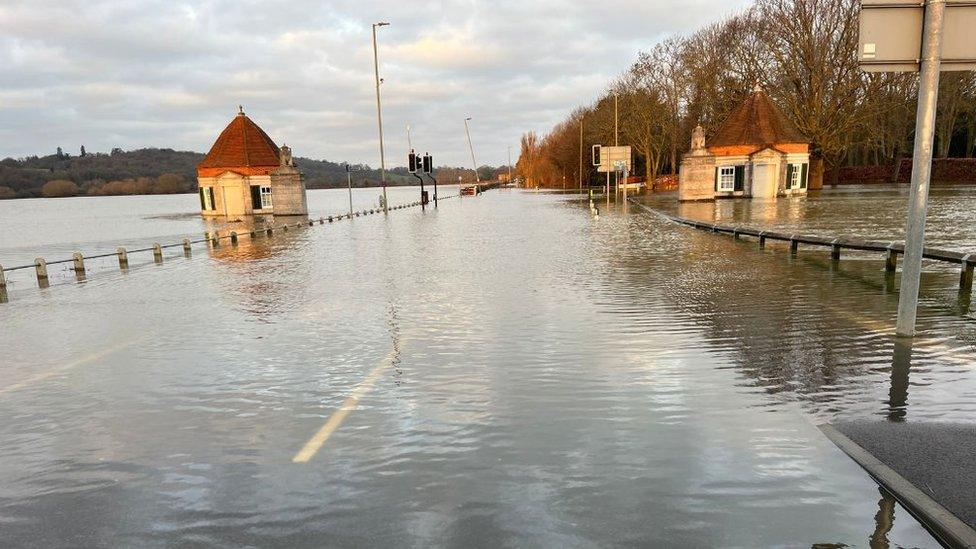
The A308 between Egham and Windsor and Magna Carta meadow is flooded
Among those criticising the use of the Jubilee River were the parents of Zane Gbangbola, who died at the age of seven during Thames floods in 2014. Their Chertsey home was flooded again - nearly 10 years after losing their son.
A statement from his mother and father, Nicole Lawler and Kye Gbangbola, said residents were evacuated from their homes by firefighters last Tuesday but received no other help.
They said the Environment Agency "opened up the Jubilee River overflow to protect residents higher up the Thames, sending huge volumes of water downstream without due warning".

In Chertsey, where Zane Gbangbola died 10 years ago, the bridge over the Thames was closed and nearby roads flooded
In Sunbury, resident Kath Sanders said a warning went out on 6 January, external on social media that the Jubilee River was to be used. By 8 January, Wraysbury had flooded, along with Chertsey, Staines and Runnymede.
Ms Sanders said: "Any surge and planned 'movements' will surely have an impact to those downstream. Proper notice and earlier warning of likely issues arising from active management of the flow, would help everyone prepare better, not left wondering what's happening, how long it will continue, and high it will go."
Hannah Rush, now dealing with insurers after her home and garden flooded, said residents were looking at the possibility of crowdfunded legal action against the Environment Agency.
She said many flood victims did not have insurance and "hundreds" supported the action, along with three marine businesses including Bates Wharf.
Floods had subsided but "lakes" remained on Chertsey Meads along with a layer of silt that smelt and looked contaminated, "like a sludgy mud, with a film on it - thick gunge", she said.
'Downstream water levels'
An Environment Agency spokesman said: "It is not true that the Jubilee River results in increases in downstream water levels, putting those communities at greater risk.
"After the 2003 flood, further river modelling was completed to re-examine any impacts from the Jubilee River on downstream communities.
"The results showed that there would be very little difference in the flows at Windsor, and the downstream water levels, whether or not the Jubilee River was operated."
A spokesman for Defra said: "During the recent extreme weather, our flood assets - including the Jubilee flood relief channel - protected hundreds of properties across Berkshire, Buckinghamshire and Surrey."

Follow BBC South East on Facebook, external, on X, external, and on Instagram, external. Send your story ideas to southeasttoday@bbc.co.uk, external.
Related topics
- Published9 January 2024
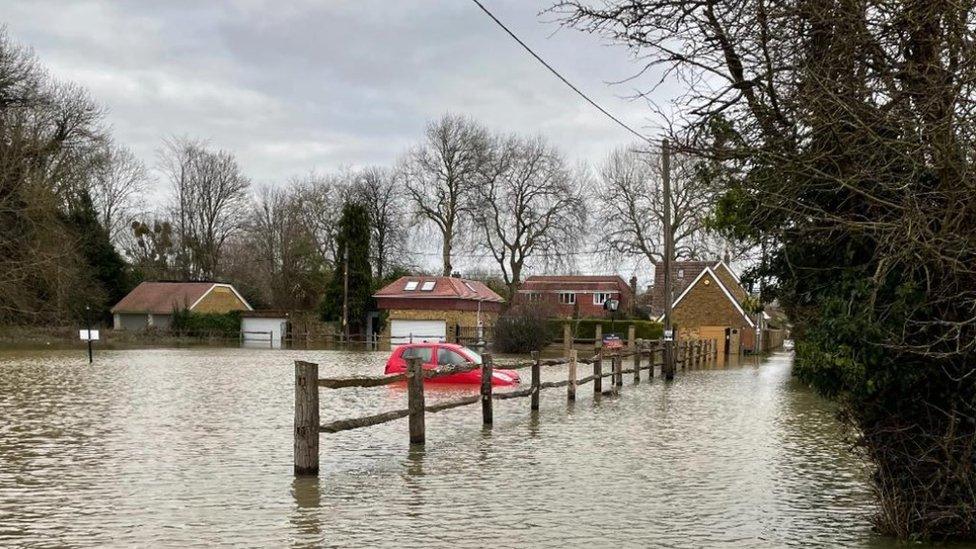
- Published9 January 2024
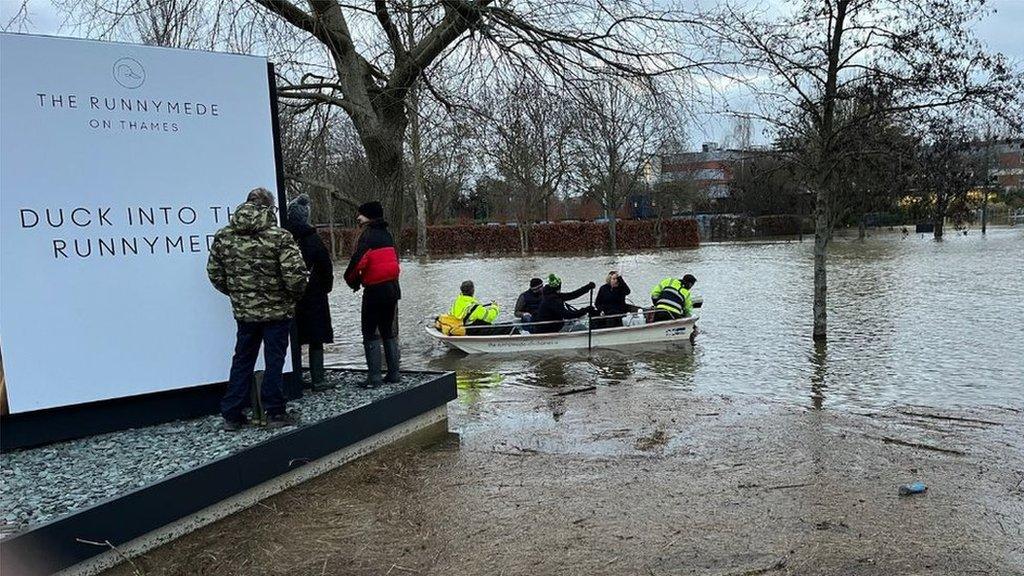
- Published11 January 2024

- Published28 December 2023
